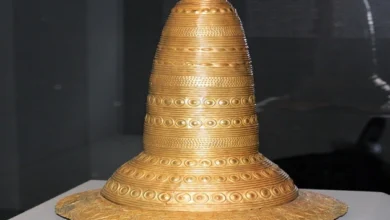Interesting theories of the origin of the universe

There are many theories of the origin of the Universe: from its creation by God to the Big Bang. But no hypothesis has yet been proven 100%. From this article, you will learn about five interesting concepts about the origin of the Universe.
5 interesting theories of the origin of the universe
1. Simulation Hypothesis
If you have watched the film “The Matrix” with Keanu Reeves, it will be easy to imagine this hypothesis. It lies in the fact that the entire Universe is a set of letters and numbers of a computer code or an illusion made in another way.
In 2003, the Swedish scientist Nick Bostrom published his article “Proof of Simulation,” which is one of the main works in this field.
But the simulation hypothesis itself began to emerge much earlier. The ancient Greek philosopher Pythagoras put forward the idea that reality can be an illusion created by someone. Aristotle held a similar opinion. And in several Indian philosophical schools, the concept of Maya was considered – the illusion of everyday life and human existence against the background of the existence of the eternal Absolute.
No matter how interesting the theory of the matrix is, it is subject to active criticism from the scientific community. They emphasize that many logical fallacies exist in articles that explore such a concept and cite a lack of evidence base.
2. Slow freeze theory
The popular Big Bang theory describes the origin of the Universe from a single solid mass. It began to expand, which led to the release of energy and matter, which created the world.
But the theory of slow freezing challenges the Big Bang. Scientists describe the process of creating the Universe as similar to how water turns into ice.
The concept is that the Universe was originally in a liquid state, then turned into crystals and split into many tiny particles. These invisible blocks form its basis, the smallest atoms that are almost impossible to see.
3. Chaotic inflation theory
Alan Guth coined the term “inflation” in 1979 in relation to the Universe. He helped explain why the Universe is flat. But if Guth’s theory were correct, stars and galaxies would hardly have appeared, which consist of randomly scattered particles.
Professor Andrei Linde formed the theory of chaotic inflation in the USA. It does not contradict the Big Bang but interprets it differently. It also helps solve several problems that physicists have faced.
According to this theory, the size of the Universe grew exponentially after the Big Bang, increasing in proportion to its original value. If initially, its size was 10 to the -36th degree, in just a few seconds, the Universe increased by at least 10 to the 30th-degree times.
The theory also claims that this process occurs indefinitely, affecting different parts of the Universe.
This leads to the concept of the multiverse.
The multiverse is a separate universe, radically different from each other. They can occur in any number and corners of space if suitable conditions exist.
4. Black hole theory

A black hole is a space-time region that has a high gravitational pull. Because of this, objects inside cannot leave it, even if they move at the speed of light.
According to one of the concepts of the origin of the Universe, it arose from a black hole, which is located in another universe.
If this were the case, it would be impossible to cross the boundary of a black hole and find confirmation or refutation of this theory outside of it. Given that our Universe is “closed,” it is unlikely that it will be possible to find its edge – the researchers will either move to the journey’s starting point, or it will last indefinitely.
But this theory also has drawbacks – black holes are unstable and close immediately after their appearance. For the Universe to expand internally, it needs exotic matter with a negative energy density. But no one knows if it exists.
5. One- Electron Theory of the Universe
This theory reflects the Universe as a collection of billions of electrons. The subtlety is that they are all one electron, which is located either in one or another point in space.
This can be explained as follows: you travel in time from Monday to Saturday, and then back to Monday. And you repeat the movement several times. You get several copies of yourself, located in different spaces.
And the electron, according to the concept of a one-electron universe, does this trillion times over billions of years.
The founder of this concept is the American physicist Richard Feynman. He concluded that all electrons were one when he was on the phone with physics professor John Wheeler.
According to Feynman’s theory, an electron that moves backward in time is the same as a positron (electron’s antiparticle) that moves forward. He noticed that if two particles collide, they disappear, releasing gamma-ray energy.
However, this concept of the creation of the Universe has its own problems. It turns out that the number of electrons in space must be equal to the number of positrons. Or the value must be greater or less than one.
But there are far fewer positrons in the Universe. John Wheeler pointed out that they might hide in protons or other particles, which we just don’t know.
Unfortunately, no matter how intriguing the theory of a one-electron universe may be, it is unlikely to be proved.




